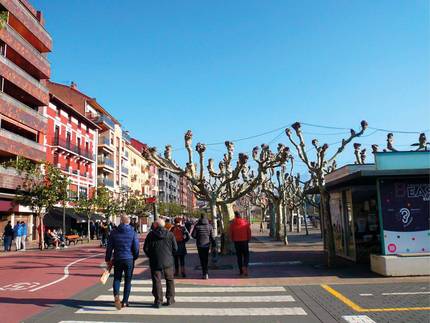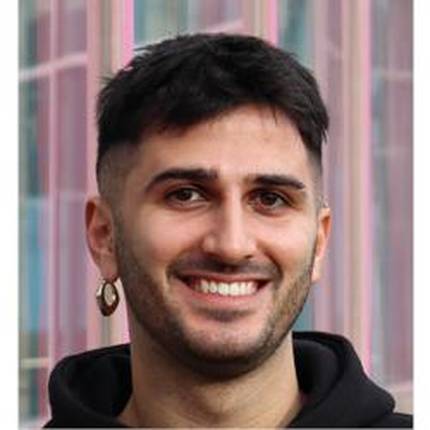Psychotropic drugs in young people, a reflection of social unrest
In recent times, concern for mental health is evident. Even before COVID-19, the prevalence of depression and anxiety across Europe was increasing and, as a result of belief, the situation has worsened, especially among women and young people. The research team OPIK has focused on young people and, based on the responses of the ESTUDES survey of the Spanish State, have analyzed the consumption of anxiolytics and hypnosedatives in adolescents and young people aged 14-18 years.
Thus, in total, data were collected from 38,000 students classified in the categories of age, gender, parental level (related to socioeconomic level) and country of origin. They wanted to know if they had ever or in the last year consumed anxiolytics or hypnosedatives with or without a prescription. And they claim that women consume more than men in all age groups.
For example, at 18 years one in three of the women ever consumed an anxiolytic, while one in five of the men. As for the rest of the categories, consumption increases from 14 to 18; in migration there is also a difference in trend according to gender; and in those of low class, consumption is higher.
In light of the results, Xabi Martínez Mendia highlighted four points. The first is the incidence of gender: “The highest consumption of women in all categories should be highlighted, taking into account all variables. This is a cleft.
Quote below age. In fact, the study collected data from those over 14 years of age, but the other databases also collected data from those over 12 years of age in the Basque Country. “And there we have seen that at 12-13 there is no difference by gender. Conversely, in boys, consumption may be somewhat higher at these ages. But at the age of 15-16, due to the strength of socialization, women’s consumption begins to increase and the gap increases.”
Collective heritage and identity
In addition, Martínez considers that it is worth focusing on the relationship between mother and daughter. “On the one hand, the influence of maternal educational level is greater in daughters, which also appears in the Euskadi database. However, beyond quantitative data, it seems qualitatively that the consumption narrative is articulated around care. That is, her daughter has access to medication thanks to her mother, because she understands that she can help her daughter when it comes, say. In addition to consumption, the way of understanding consumption is inherited”.
Martínez has also had the opportunity to analyze the ESTUDES 2021 survey, demonstrating that the trends have been strengthened and pointing out a nuance: “I have to study it better, but it seems that the increase in consumption is more pronounced at earlier ages, that is, although it has generally increased, in those 14-15 years it is much higher. The increase, therefore, has not been proportional in the 2021 sample, and our hypothesis is that increased consumption and gender differentiation will begin sooner.”
What is more: “We have the impression that there is a risk of making it a way of socializing the consumption of pills to get an identity mark. It is still a hypothesis, but we suspect that the issue of mental health, socialization and the normalization of medicalization can pose a risk of socialization from there, which is what generates group identity”.
Amaia Bacigona de la Hera, a member of the OPIK research team, also sees other risks in the early incorporation of lithic techniques: “We do not, of course, know the effects that psychotropic drugs can have on long-term consumption, as well as their possible physiological effects on people of these ages. In fact, in clinical trials conducted by the pharmaceutical industry, samples are often very homogeneous in both gender and age. Therefore, we know very little about the effects of psychotropic drugs on young bodies.”
It corresponds to clinical iatrogenesis. But Baciggin explains another kind of iatrogeny. “Iatrogenesis is social or cultural; the other is also important or more important. And that is that it's becoming increasingly normalized to take psychopharmaceuticals to deal with everyday situations, which wears us down. In other words, we lose the ability to respond to these problems through other strategies such as the use of community resources and networks or the family. Before the knots were liberated in these social structures, now the young are learning to solve the knots with psychotropic drugs”.

Solutions beyond pills
Since the consumer trend is so closely linked to social partners, solutions must also take account of the social dimension. Martinez, for example, remembers the starting point, in which he emphasizes. “Gender is the factor that influences everyone. One cannot talk about the consumption of anxiolytics without talking about gender.” Therefore, according to Martínez, solutions should be addressed: “The biographies of young people are not individual, they are collective. And the constraints that influence it must access the consultation.”
In education, in addition to offering affective-sexual education, it considers important to offer tools for students to understand that their discomfort has social reasons. “If you don’t have these tools, just as you think a pill can solve your problems and what you have to do is join your group of friends and expel your aggressor.”
It also believes that it should be borne in mind that the pharmaceutical industry has interests, and that this should be regulated strictly. Finally, from the legal point of view, it proposes the socialization of care and the fight against precariousness or the decrease in the value of wages, always centered on gender. Indeed, it considers it essential to point out and problematize the social organization that takes advantage and perpetuates the sales gap. “And this has to be done everywhere. Not only social agents, but also clinical, statistical or sociology. It can and must hold on all sides.”
It is also clear that the discomfort of young people cannot be detached from the uncertainty they live with regard to the future and other characteristics of the environment. “Therefore, if we were able to stimulate hope for the future and solve the socio-economic problems that live in daily life, both they and their parents, we would achieve a significant impact on their well-being, resulting in a reduction in consumption.”
As for gender, Baciggin coincides with Martínez's vision. “Girls, during their adolescence, receive strong, not only from the physical or visual point of view, but also socially, in their academic activity and in other areas. And they face it all. In this sense, it is noteworthy that the more mothers consume, the easier the girls' access to the pills. There is a very special transmission of care, based on facilitating the entry of psychotropic drugs”.
Apart from the mother-daughter relationship, in any area, Baciggin believes that it will always be beneficial, from the point of view of gender, to make available to young people other instruments or to encourage them to have them “to help solve the knots they face in their daily lives”.
The era of discomfort
In short, the situation of youth is a reflection of current society. Marta Carmona Osorio, psychiatrist, co-author of the book Malnos. And it says clearly: “Discomfort is the feeling of this era. As in other times other conditions have appeared, such as female hysteria or XX. Crazy years from the beginning of the century, this period is a discomfort.” According to Carmona, “these times have never ended with health interventions, but with social changes. And this current feeling also gets broken by social changes, not by the health system.”
However, and in this connection, the other author of the book Malsomos, Dr. Javier Padilla Bernáldez, and Carmona herself, want to make it clear that the motto of replacing psychologists with unions is wrong. “This dilemma is false,” says Padilla. “Because they are not comparable. Psychotherapy is the individual help after the onset of damage. Also in the case of trade union organisations, where a worker has had a problem in his or her workplace, he or she may go to the trade union. In this sense, psychologists and unions can be equated. But trade unions do much more than that: their mission is to achieve and guarantee the right conditions for workers through laws and standards. One gives the solution to the individual after the appearance of damage, the other works ahead for the benefit of the collective”.
Ability to touch more doors
Padilla also mentions suicide. It also considers that, in addition to helping the person who intends to commit suicide, measures must be put in place that affect society as a whole so that suicide is not the only escape of the person who suffers. “The entire risk curve must be moved: not only intervening in the profiles of the highest risk, but taking the whole of society and reducing the risk to society as a whole. As in the prevention of car accidents”.

Carmona agrees. “Those who suffer see that there are possibilities, different possibilities, to alleviate their suffering. I am no longer referring to what he intends to commit suicide. Even if the pain does not reach that level, those who feel ill have more doors and more ways to ask for help, in addition to the health services”.
Thus, in the book Malsomos, the authors propose four axes that help to live better: equality; social infrastructures that allow other ways of relating to each other; promotion of attachment, no need to move home or workplace in the interval of time; and, finally, the elimination of the sexual distribution of work to prevent care from being a source of attraction.
Carmona stressed that “although the pillars of the hegemonic discourse are the individual, the economy and production, we all have examples that prevent this discourse, everyone. We're all cared for in some area or we take care of someone, or we know someone who cares for someone. Therefore, although the hegemonic discourse is this, in practice we oppose it in different spaces. Therefore, part of the solution lies in the identification of these spaces and the claim of the guard relations between us. Because they exist and have enormous value.”










